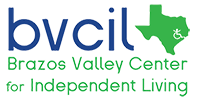 So, what does it take to succeed after high school?
So, what does it take to succeed after high school?
Knowledge of strengths and limitations
-Express personal strengths
-Describe personal limitations
-Explain academic situations where assistance is needed
-Describe academic situations where success is experienced
Actions related to strengths and limitations
-Find situations to use personal strengths
-Find situations where personal limitations are not highlighted
-Consider personal weaknesses when making decisions
-Create new strategies to compensate for personal limitations
Disability awareness
-Report accurate information regarding one’s own disability
-Express types of accommodations needed for success
-View a disability as only one aspect of life
-Explain the special education services that one receives to others
Employment
-Express the desire for a job that matches career interests
-Demonstrate job readiness skills, such as being on time, completing work as assigned, and working cooperatively
-Successfully participate in a career technology or job-training program
-Obtain a paid job
Goal setting and attainment
-Participate in the systematic learning of goal setting and attainment
-Understand the importance of setting and striving for goals
-Set post-school goals that match skills and interests
-Attain at least one transition goal
Persistence
-Understand the importance of putting forth continued effort in school
-Work toward a goal until it is accomplished
-Utilize multiple strategies to stay on task
-Continue to work toward a goal after facing adversity
Proactive involvement
-Maintain at least one good friend
-Successfully participate in small groups to complete projects
-Successfully participate in community organizations such as sport clubs and social groups
-Successfully interact with peers, teachers, and other adults
Self-advocacy
-Use the Internet or other sources to understand disability rights, supports, and accommodations
-Identify effective and ineffective accommodations
-Request additional accommodations when encountered with one that is ineffective
-Discuss post-school goals with the IEP team
-Actively lead one’s IEP meeting
Supports
-Recognize the difference between individuals who provide a positive source of support from those who do not
-Identify situations when positive support people are needed
-Use help from positive support people only when needed and necessary
-Maintain a support network by showing appreciation or reciprocity
Utilization of resources
-Seek assistance from other sources when the people in one’s current network of positive support people cannot help
-Use available support people at school or work
-Use the Internet to access information for possible support services or community agencies
-Seek assistance from community agencies
Based on research by McConnell, Martin, et al., and the Zarrow Center for Learning Enrichment, University of Oklahoma. Research funded through Institute of Educations Sciences, National Center for Special Education Research (Grant # R324A100246)

